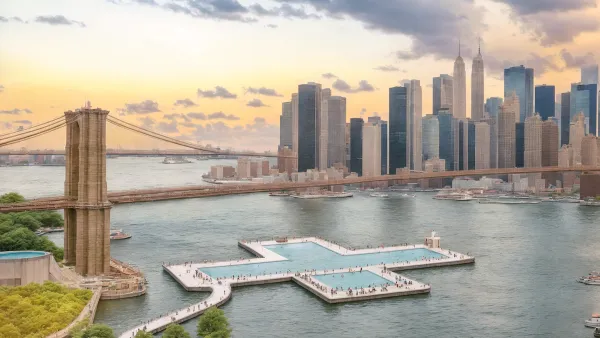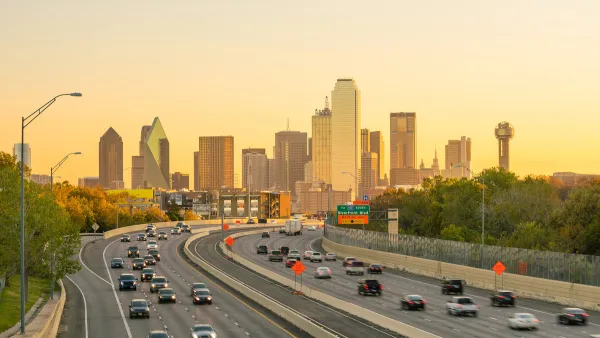Urbanism media noted the growing privatization of recreation facilities, such as pools, as one of the lessons to be taken from a controversial encounter between police and black teenagers in McKinney, Texas over the weekend.
Coverage of a disturbing video that emerged earlier this week noted that racial conflict often emerges at the location of controversial distinctions between public and private.
Yoni Applebaum writes for The Atlantic, drawing insight out of a discussion about the communal pool, located in a private development and off-limits to the public, at the center of the episode that led to the controversy. "The public pools of mid-century—with their sandy beaches, manicured lawns, and well-tended facilities—are vanishingly rare. Those sorts of amenities are now generally found behind closed gates, funded by club fees or homeowners’ dues, and not by tax dollars. And they are open to those who can afford to live in such subdivisions, but not to their neighbors just down the road."
Brentin Mock covers a similar theme for Grist, focusing on the long and often misreported history of Black Americans fighting for access to pools as well as natural settings to swim.
Emily Badger follows Applebaum's theme for The Washington Post, but also makes a connection between the "privately owned public spaces" that made news during the Occupy protests. "This exact same phenomenon has surfaced in many forms well beyond swimming pools. Americans have replaced — or, rather, withdrawn from — many of the public spaces and shared resources that were prominent in communities decades ago. And so private schools take the place of public ones, individually owned cars replace mass transit, secluded yards supplant public parks," writes Badger.
For CityLab, Kriston Capps notes the city of McKinney's central role in a closely watched Supreme Court case, Texas Department of Housing and Community Affairs v. The Inclusive Communities Project, Inc., which is expected to reach a verdict this month. According to Capps, "the Supreme Court case that now concerns McKinney is larger than any single exclusionary amenity. The Roberts court may redefine exclusionary zoning altogether. What the Supreme Court does next will decide whether residents of McKinney—and Flower Mound, and Lewisville, and Sunnyvale, and Frisco, and suburbs and cities far beyond Dallas and Texas—can erect informal barriers to keep poor black residents not just out of their pools, but out of white, wealthy areas in an altogether more profound way."
FULL STORY: McKinney, Texas, and the Racial History of American Swimming Pools

National Parks Layoffs Will Cause Communities to Lose Billions
Thousands of essential park workers were laid off this week, just before the busy spring break season.

Retro-silient?: America’s First “Eco-burb,” The Woodlands Turns 50
A master-planned community north of Houston offers lessons on green infrastructure and resilient design, but falls short of its founder’s lofty affordability and walkability goals.

Delivering for America Plan Will Downgrade Mail Service in at Least 49.5 Percent of Zip Codes
Republican and Democrat lawmakers criticize the plan for its disproportionate negative impact on rural communities.

Test News Post 1
This is a summary

Test News Headline 46
Test for the image on the front page.

Balancing Bombs and Butterflies: How the National Guard Protects a Rare Species
The National Guard at Fort Indiantown Gap uses GIS technology and land management strategies to balance military training with conservation efforts, ensuring the survival of the rare eastern regal fritillary butterfly.
Urban Design for Planners 1: Software Tools
This six-course series explores essential urban design concepts using open source software and equips planners with the tools they need to participate fully in the urban design process.
Planning for Universal Design
Learn the tools for implementing Universal Design in planning regulations.
EMC Planning Group, Inc.
Planetizen
Planetizen
Mpact (formerly Rail~Volution)
Great Falls Development Authority, Inc.
HUDs Office of Policy Development and Research
NYU Wagner Graduate School of Public Service





























